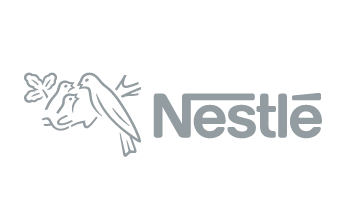In the past it was a daunting task for marketers to use data to define and target their audiences correctly due to consumer data being minimal and hence, not easy to segment and create a target audience profile. Marketers had to use less ideal marketing practices, which included sending unsegmented emails, cold calls, and ads. Which consumers ignored for the most part.
You can tell how ineffective and costly this approach was due to organizations not leveraging consumer data during their marketing and consequently, sending emails that weren’t strategically targetted. Quite a waste of marketing resources, right? McKinsey writes that companies that leverage customer data outshine their competitors by 25% in Gross margins, and by 85% in sales growth.
There needed to be a breakthrough in marketing. There needed to be a shift from finding the right customer for the product to finding the right product for the customer. Getting over a “make-and-sell” philosophy and giving in to a customer-centered “sense-and-respond” philosophy. The solution? Behavioral marketing.
What’s behavioral marketing?
Quick question; have you ever searched for a website online, spent some quality time on the site, and even signed up for their offer but didn’t complete the action then proceeded to log into your Facebook account, and noticed the company’s ad in your newsfeed? That’s how behavioral marketing works.
Another example is when you unsubscribe from an offer –let’s say a course on Udemy –you always pay monthly and perhaps decided to drop it after a few months. You might think you are done until one month later when you get an email in your inbox; “come back”! For three times less than what you always pay. That’s behavioral marketing at its best.
It’s a robust form of marketing that focuses on individual patterns of behavior and engagements to match specific interests, intents, and needs of the ideal market. To do this, marketers have to gather consumer data using search history, web analytics, and cookies to target audiences in a laser-like fashion.
Perhaps a good example of companies that took this form of marketing seriously was KFC. The worldly renowned fast-food giant knew that to beat competitors such as Subway and McDonald’s, it had to collect their customer’s data and offer them personalized menus and services. It knew that some customers are taste-conscious, while others are calorie-conscious.
The company decided to offer its lower-calorie chicken options to the calorie-conscious customers and mouth-watering, higher-calorie options to customers who wanted to satisfy their taste buds. To further meet their customer demands, the company introduced Salad, Arabian Rice, and Fish Zingers to their menu as well as enhancing food freshness, quality, and diversity to boost their customer’s experience.
Which user actions should you track to undertake behavioral marketing?
- Clicked links and ads: The type of links and ads a customer clicks reveals their objectives and the kind of messages that draw their interest on the internet. Which links are your customers clicking? Which type of CTA worked best for them? Understanding these will enable you to create more personalized ads.
- Purchase history: Track your customer’s purchase history to predict his or her favorite products. Sometimes the customer buys two or three times and then stops. In such cases, it might be that he or she has found an affordable option. You can choose to send the customer offers for similar products. It pays to use purchase history data to target the customers whenever you have offers, too.
- Web searches: What are your customers searching on the web? What solutions are they searching for? Using this analyzed data, you can offer related targeted ads to these customers and create a more comprehensive user profile for retargeting.
- Time spent on a site: How do you measure the interest level of the user? If a web visitor clicks on your website and scans it before clicking the ‘back’ button, is that user interested in the information on your site? No. Suppose another user clicks on your website and spends more than 20 min on it? Now that indicates interest! That’s why this aspect is crucial in behavioral marketing.
- Elements they interact with on the web page: Web users spend more time on web elements that give them the most value. They can choose between blog posts, video content, or engaging graphics. Whichever the case, these actions speak volumes about their objective and enable easy creation of future marketing messages in the right formats and positions.
In as much as you might want to understand behavioral marketing, you need to understand the full scope of it. You shouldn’t overlook behavioral segmentation as a powerful concept in behavioral marketing.
What’s behavioral marketing segmentation?

This marketing concept involves dividing your customers into small segments based on the behavior patterns these customers exhibit as they come into contact with digital properties. It’s facilitated by customer data collected and analyzed by digital tools.
However, despite marketing segmentation being a robust practice in marketing, Forrester reports that only 33% of the companies using the concept find it impactful. The reason for this is that they are undertaking outdated segmentation techniques.
Having geographical and demographical customer’s data is not enough. Besides understanding who is your customer, it pays much more to understand what their usage and habits are. That’s where behavioral segmentation comes in; it involves studying customer’s search history, transaction history, time spent on the web, links and ads clicked, and other actions.
Example:
Twitter is trying to prove to marketers that it can produce results and high ROI. The company has several offerings such as promoted tweets, promoted trends, and promoted accounts. However, the best feature that Twitter has introduced is the interest-based targeting for its promoted account products, and promoted tweets.
Twitter’s primary aim now is to target users based on topical interest. It now has 350 interest categories in two levels. First is the top-level, which consists of the trending usual topics and second, a level that speaks to the subtopics that emerge from the first. By targeting their interests, Twitter is aiming to connect with a more significant number of users.
Why is it essential to segment customers based on their behavior?

- To identify and prioritize high-value prospects: Segmentation allows you to group Prospects according to their predictive conversion level. This will enable you to spend more marketing resources on segmented groups that convert easily.
- Send personalized marketing messages: Segmentation allows you to tailor your marketing message to different segments of customers and send the message through their preferred marketing channel. Invesp writes that 53% of online shoppers value personalized shopping experience. 57% are willing to give out their personal information if they benefit from it.
- Track performance: Analyzing how segments are changing over time and growth patterns enable you to track the performance of your business against the goals you have set.
- Help in prediction: If you can take time to study the historical behavioral patterns of your customers, you can easily predict and influence future outcomes such as what the customer will be buying next.
How behavioral marketing is empowering businesses

Here are some of the ways that top companies are using this form of marketing to boost leads and sales.
1. Offering personalized user experiences
Your customer knows what they want. They want value for their money. 55% of consumers are willing to pay more for a better more personalized user experience. How do you deliver personalized user experiences? The solution is behavioral marketing. You need customer data to do this.
Analyze the data to come up with impactful information about the customer. Create a profile for each segment of your customers before targeting each with personalized marketing messages.
2. Improving conversion rates
The primary aim of behavioral marketing is to reach a targeted audience. This kind of marketing appeals much more to customers who see them. If an ad provokes the interest of customers, most will opt to find out more about the brand or even purchase the product or services. In such a case, conversion rates shoot up and boost overall higher profits.
3. Boosting your ads CTR
It’s much more effective to convert prospects with a personalized ad that has been tailored to meet the prospect’s interests than with an ad that hasn’t taken into consideration the behavior of the users.
If a user searches for something online and tries to purchase an offer from the site but ends up abandoning the order, Google will track this customer’s behavior and use this data for retargeting the customer any time he or she lands on related web pages. There’s a high chance that a customer will click on an ad from a company with an offer they’re interested in, at an affordable price because their purchasing objectives are being met.
4. Enabling the creation of highly-converting content
How do you feel if someone sends you irrelevant content? Irritated, right? Don’t do the same to your customers. Make each piece of content personalized and tailored towards solving a problem that your customer faces.
Content is everything. Don’t only make it high-quality, but personalized as well. Forrester Total Economic Impact reported that whenever retailers personalized their event-triggered campaign content, they saw a 667% ROI.
5. Boosting e-commerce sales
The shopping cart abandonment rate is at an average of 70%. It’s a common behavior for customers to abandon their carts. It can be as a result of noticing they didn’t have enough money or they might just have found a better option. In whichever case, you need to retarget these customers with better offers.
Since you already have one of their critical points of contact –email –you can opt to send retargeting emails. Guess what? AdRoll reported that retargeting emails have an open rate of up to 60% and a click-through rate of 15%.
Verdict
Once you understand behavioral marketing correctly, it can be a game-changer for you. Most top companies like Apple are investing in customer data to drive innovations. Success lies in the data that you have about your customers. You can analyze your data to form great insights that drive leads and conversions for your business.
Ready to begin your journey on big data and analytics to foster business growth? We’d love to work with you. We can help you leverage your consumer data for insights that enable you to make fact-based business decisions instead of playing a costly guessing game. Contact us today!










"Their experience and stewardship assisted us in making the right decisions for this project and many others."
Massy Stores
Vice President Marketing & Communications